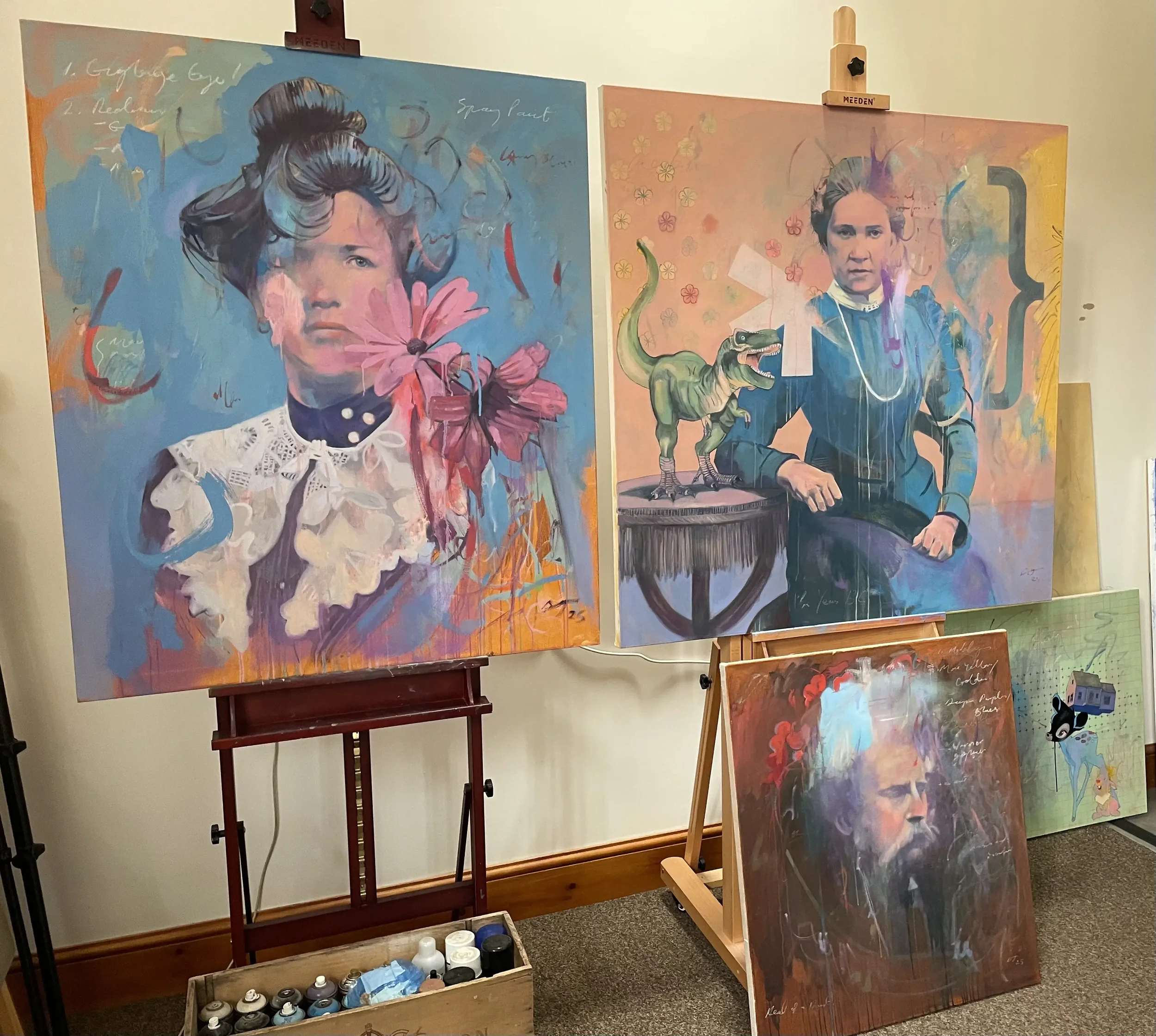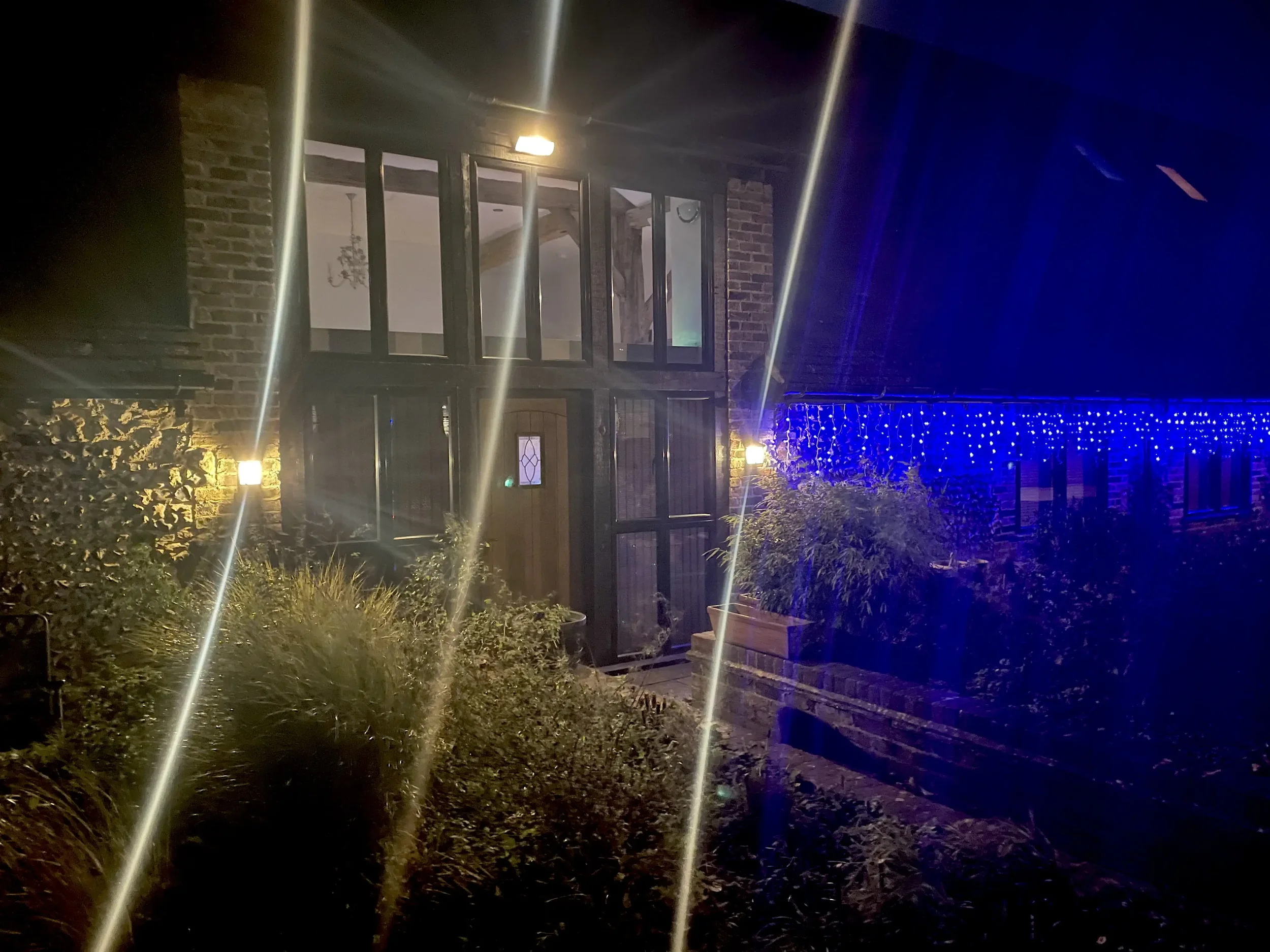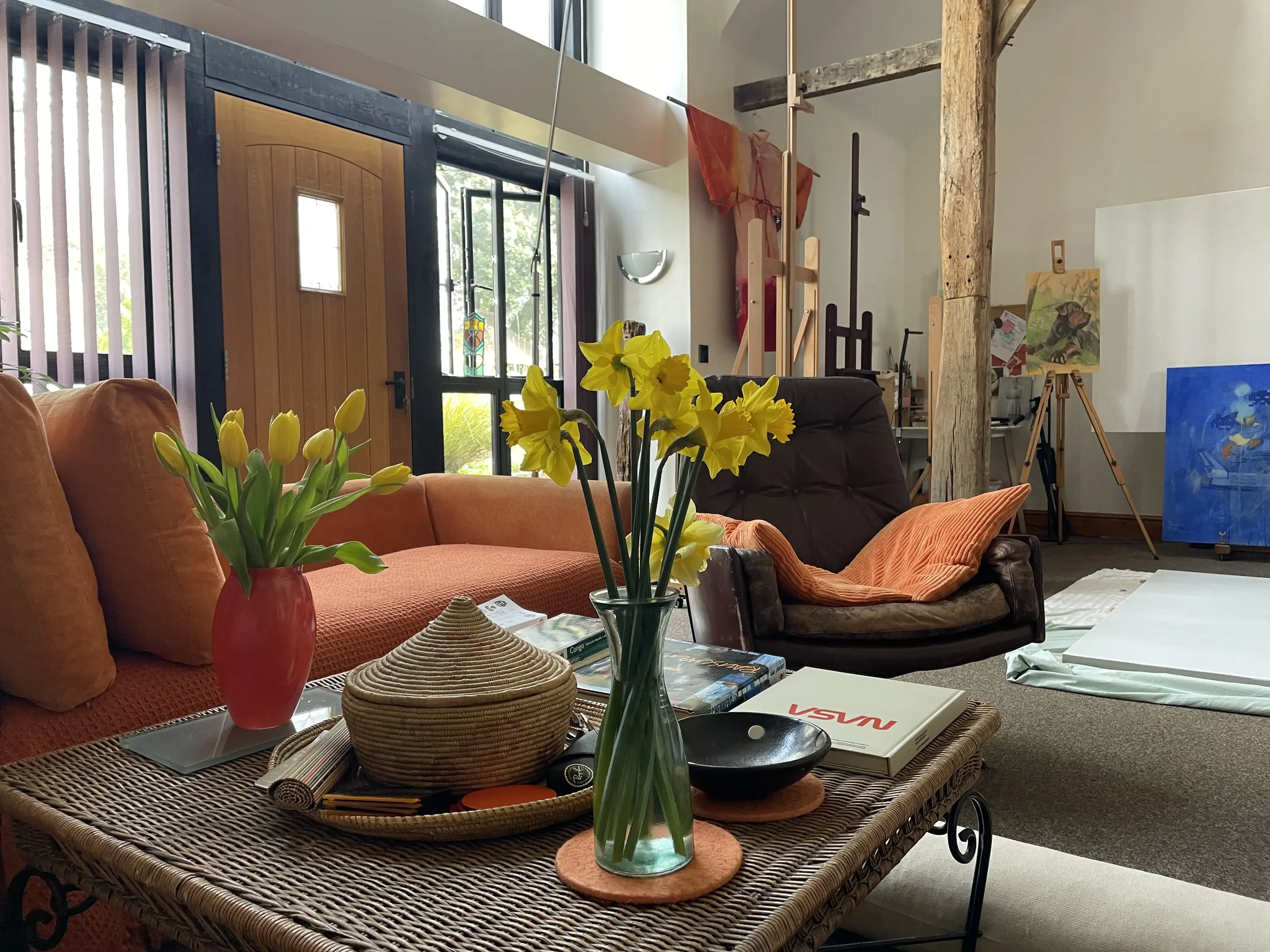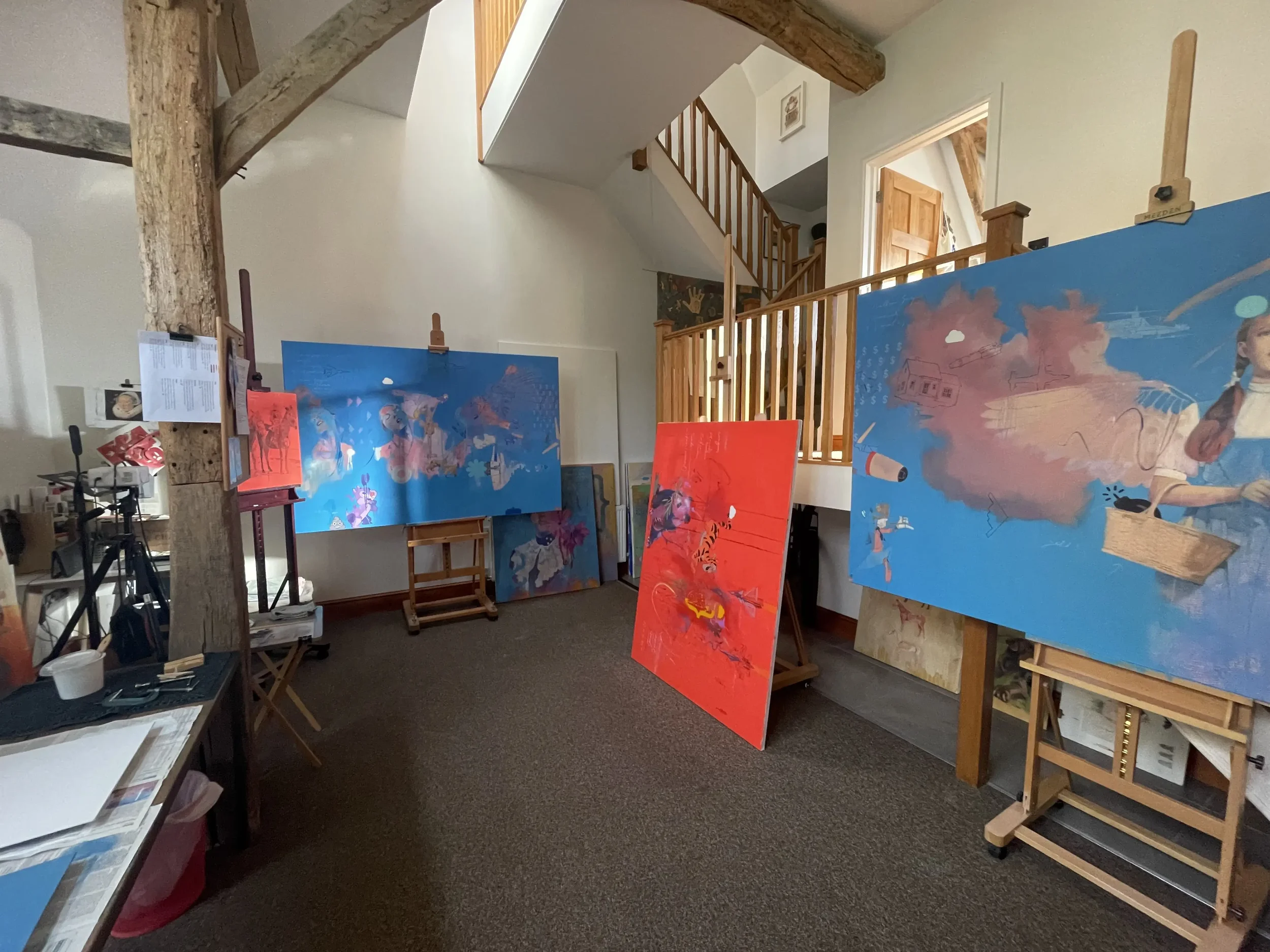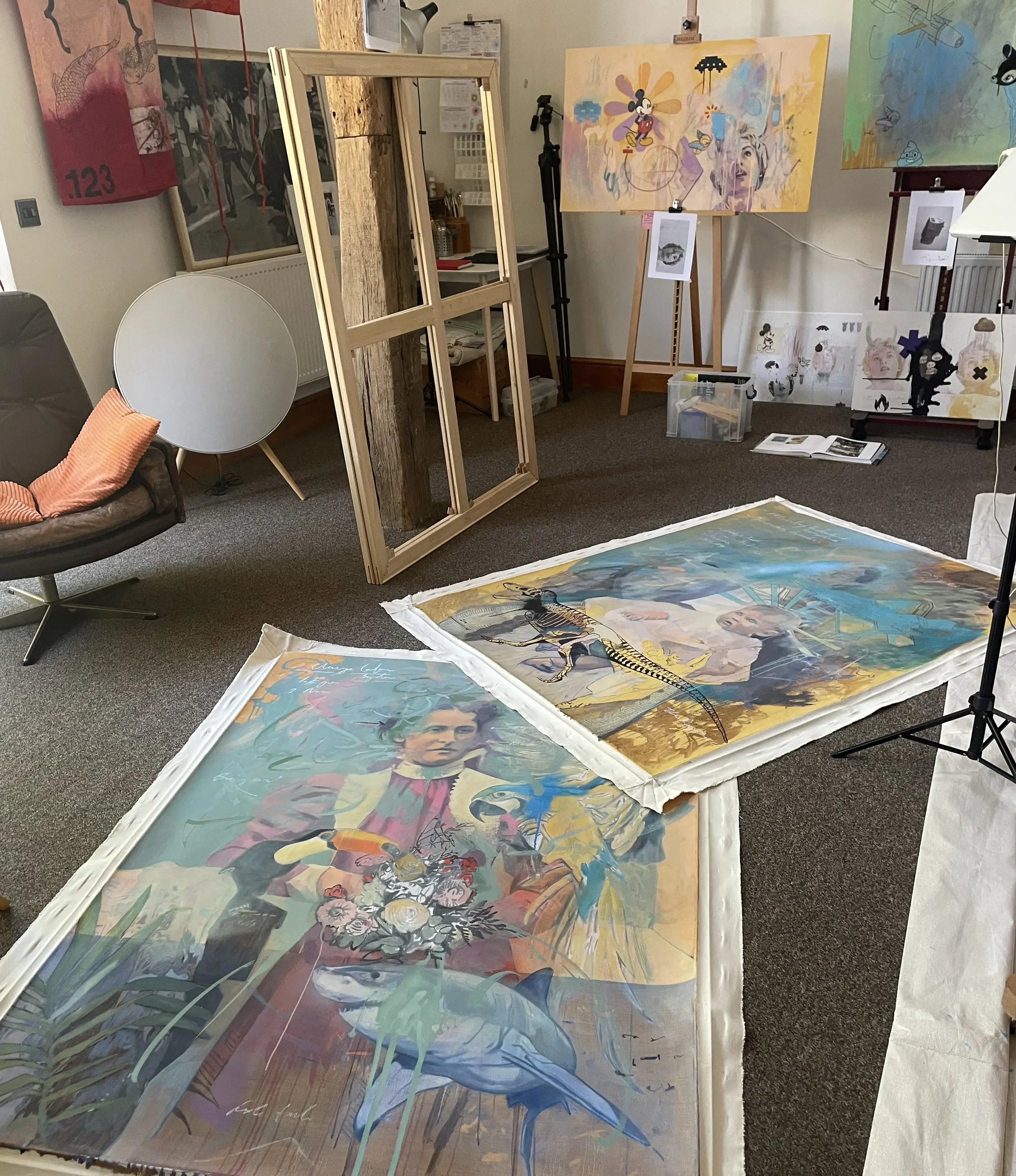
Updated Autumn 2025
IN The Studio
WORK IN PROGRESS
TAPESTRIES
CARTE VISTA
LIFECYCLES
My studio is also where I live - a small, quaint and quiet medieval barn, just outside Brighton on the south coast of England.
Whilst the little hamlet of Kingston Buci has been somewhat encroached on over the years, it’s close to the sea and the industrial port between Brighton and Shoreham (which has its charms) with quick access to the peaceful South Downs where I can go for a stroll, collect my thoughts and garner inspiration.
The space has beautifully even light too.


